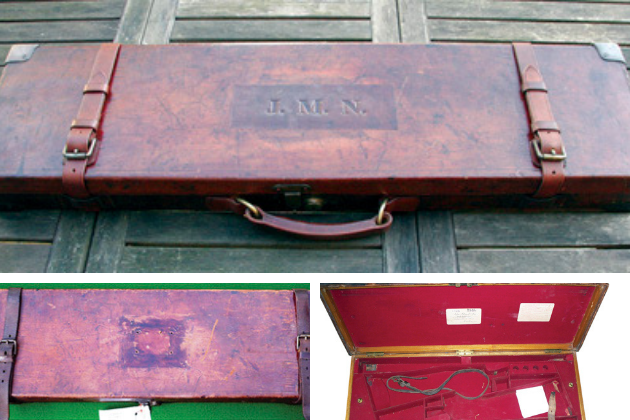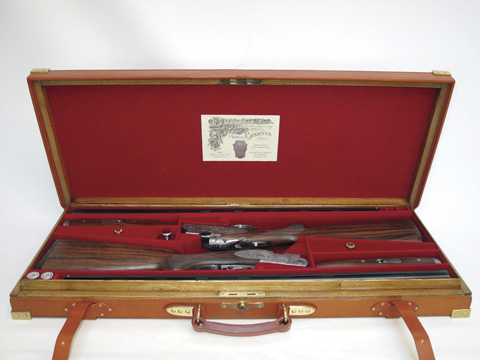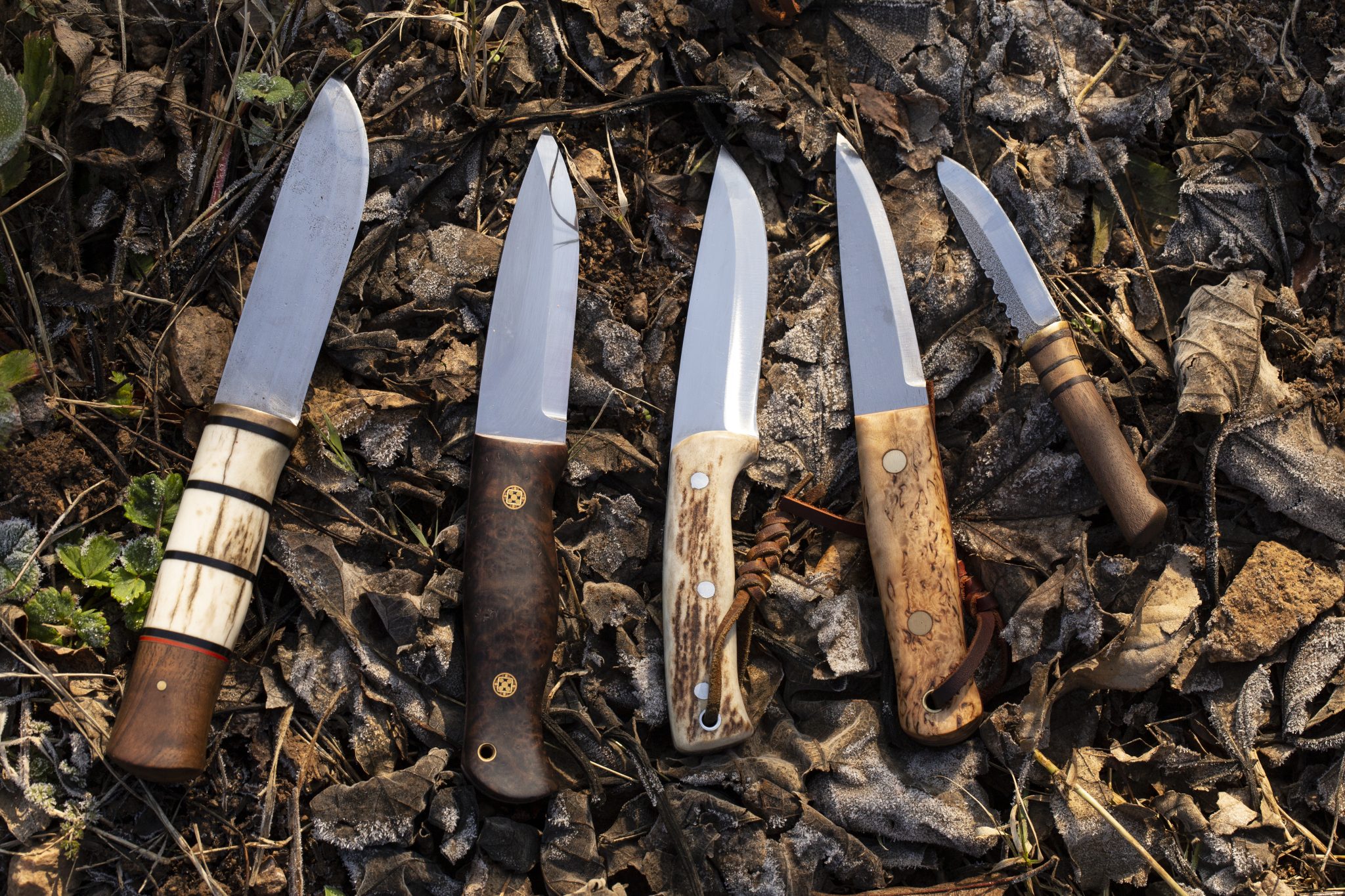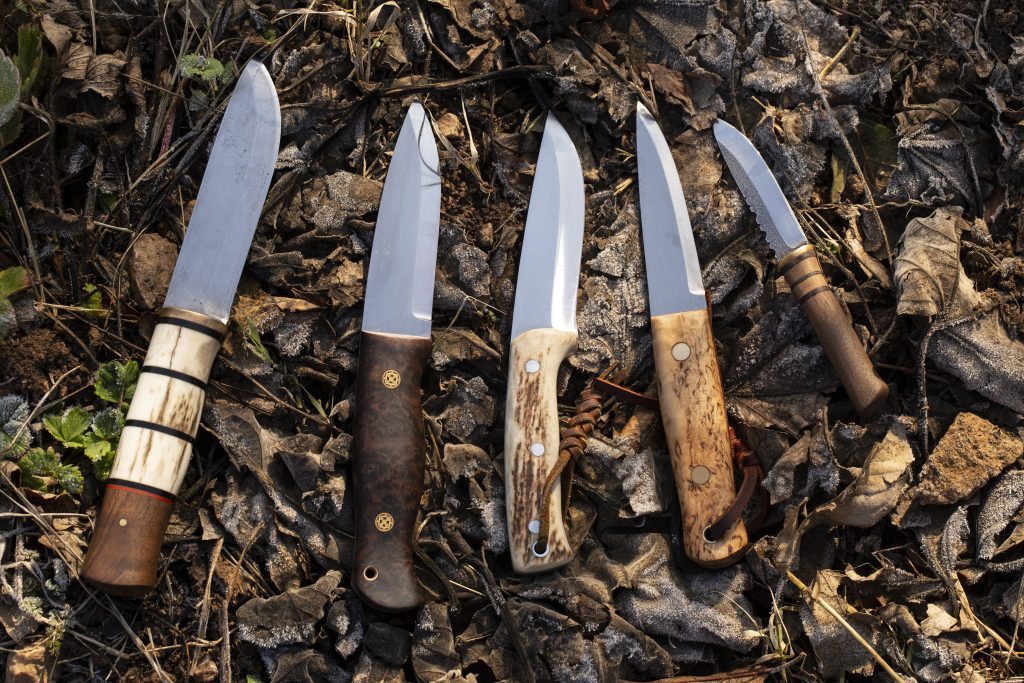Win CENS ProFlex DX5 earplugs worth £1,149 – enter here
The art of gun case restoration
Gun case restoration: Although gun case restoration is a long process it is well worth the effort.

Some second-hand English shotguns come with their original leather cases. In other instances, the buyer has to find a case to fit the gun.
If you’re searching for something traditional, you’re likely to find that it has suffered some damage. Hardly surprising as its job is to protect the gun inside. You may find that handles are missing, hang on by a thread. Perhaps the condition inside is tatty and dirty.
So how do you go about vintage gun case restoration?
With a combination of a little knowledge, the correct materials and access to appropriately skilled craftsmen, most vintage gun case restoration projects are possible.
You’ll be rewarded with a beautiful gun case in which your pride and joy can safely be transported for another lifetime’s worth of shooting.
Valerie Michael and Neil MacGregor are based in Gloucestershire and have been transforming and restoring leather pieces since 1976. They run leather working courses teaching traditional, time-honoured techniques. Whilst these have been postponed during the COVID pandemic, they will be starting again later on in 2021.
West Dean College of Arts and Conservation near Chichester also does short courses in leather work.
How did gun cases evolve?
The design and methods of construction of gun cases, like the guns they were intended happened over time.
The oldest types are the solid mahogany which were used for muzzle loading percussion guns built pre-1850.
These typically have two tiers necessary to hold not only the stock/fore-end and the barrels, but all the reloading accessories such as powder and shot flasks, bullet moulds, wad cutters, cleaning equipment and an assortment of tools. Often these cases have separate leather outer covers, although they have often been separated from the wooden case and as such are rare and much sought-after.
The next design change was for the leather covering to be permanently attached to the wooden case in an attempt to offer greater protection from damage while travelling. During the later percussion period, oak started to replace mahogany for the frame, thus establishing oak and leather construction as the standard best-quality case.
Lighter weight cases followed with Scandinavian pine being used for the carcass, which, since it was completely covered in leather, wasn’t visible like the carcass of an oak and leather case. Various styles became popular and some were often associated with individual makers or gunmaking centres.

A gun case before restoration. Note the loose handle and scoring it had suffered, typical of gun cases of a certain age.

The top of the gun case. The bottom image shows the entire case beautifully restored.
Covered lids for all the small internal compartments were popular during the hammer gun period, and Scottish makers favoured lining the insides of their cases with contrasting pig or goatskin.
Tools were often fitted into precise cut outs lined with leather or wool baize (so called French-fitting) and green wool baize lining became the almost de facto standard until the 1860s, after which red baize became the commonest.
As the use of doubles and then trios of guns became popular with late Victorian and Edwardian era sportsmen, cases were made accordingly.
Tanning leather
The advent of the motorcar as a means of transport saw the introduction of the motor case format, in which the shape of the case changed, becoming more compact to fit the luggage space available.
Old cases reflect the state of the technology in the leather industry at the time. Modern mass production methods for tanning leather involve treating the skins in solutions of chromium salts.
However, during the 19th century, and still in the case of the best quality leathers produced today, the processes were more sustainable and involved treating the skins in vegetable-based tanning liquors made from soaking bark and wood chippings in water, often for very lengthy periods.
These vegetable-tanned leathers (of which oak-bark tanned is widely recognised as one of the best) are far superior to chrome tanned varieties in appearance, durability and how they can be manipulated and crafted by skilled leatherworkers.
If you are contemplating vintage gun case restoration of an old gun case we recommend you find someone who uses vegetable-tanned leathers, since both the fit and finish are far superior to anything that can be achieved using chrome tanned leather.
An added bonus being that vegetable-tanned leather ages well and in a relatively short time the repairs acquire a genuine patina that allows them to blend in with the original parts of the case.

The restoration of the gun case for these Berettas took a long time to complete but the results are outstanding.
Above you can see a completely refurbished oak and leather double case, work undertaken by Allan Gillespie.
Based on the gun numbers on the trade label, the case was sold circa 1895 and although the leather had been badly damaged and was a complete write-off, the oak frame was in good condition with no significant distortion and the lock hadn’t been forced. After removing the old leather the frame was taken apart, the metal parts retained for cleaning and re-use, and the old baize removed to expose the wood.
Animal-based glues were typical in the 19th century and all traces of these had to be removed and all the joints re-glued and clamped. The leather chosen to cover the case was a Belgian full grain vegetable tanned hide. Recovering took longer than anticipated due to the amount of work required to ensure a perfect fit and the use of Allan’s trademark perimeter stitching on all the major seams.
The refitting of the interior partitions was quite an exercise since the original layout was for a pair of side-by-side guns with straight hand stocks, not a pair of over-unders with pistol grips. It was necessary to have the fore-ends separate from the barrels but everything eventually came together.
The final stage was the fitting and adjustment of the lid to ensure an effortless closure, followed by the setting of the wraparound straps. The straps will stretch over time so it’s important they are fitted and the number and location of the holes take account of this.
Looking after a gun case after restoration
Leather is a very durable material and all that should be necessary is to wipe clean with a lightly dampened cloth (there shouldn’t be a need to soak or scrub the leather) and allowed to dry naturally without the use of any source of heat.
A regular but sparing application of a proprietary preservative is recommended to keep the leather nourished. Something incorporating lanolin and natural oils or waxes is all that is required, but don’t be tempted to use shoe polish.
Finally, buff with a soft clean cloth, and when not in use store in a well ventilated place away from sources of heat such as radiators.
Follow these simple guidelines and your gun case will almost certainly last longer than you do.
Places to get a gun case restored
We spoke to specialist gun auctioneers Gavin Gardiner who see many antique gun cases and asked for advice. They suggested:
Related Articles
Get the latest news delivered direct to your door
Subscribe to Shooting Times & Country
Discover the ultimate companion for field sports enthusiasts with Shooting Times & Country Magazine, the UK’s leading weekly publication that has been at the forefront of shooting culture since 1882. Subscribers gain access to expert tips, comprehensive gear reviews, seasonal advice and a vibrant community of like-minded shooters.
Save on shop price when you subscribe with weekly issues featuring in-depth articles on gundog training, exclusive member offers and access to the digital back issue library. A Shooting Times & Country subscription is more than a magazine, don’t just read about the countryside; immerse yourself in its most authoritative and engaging publication.







